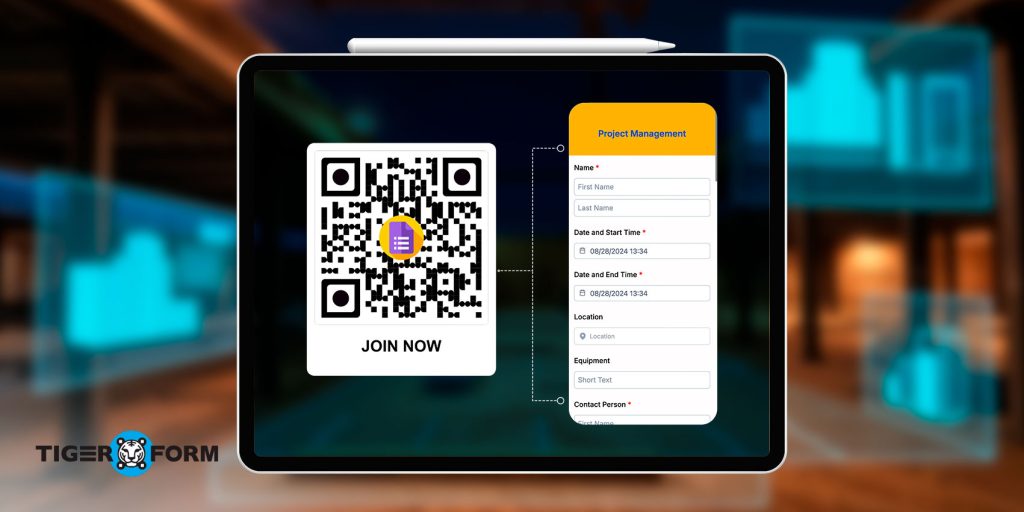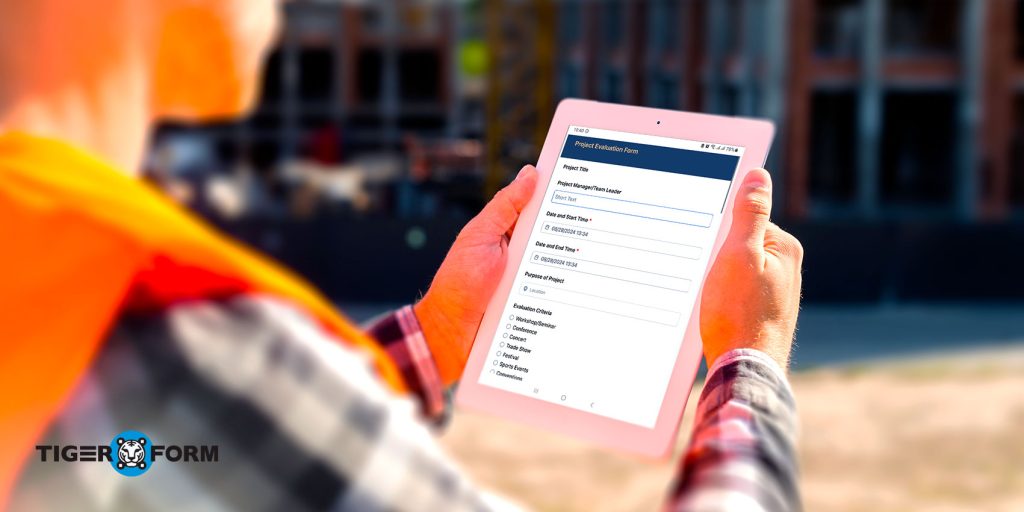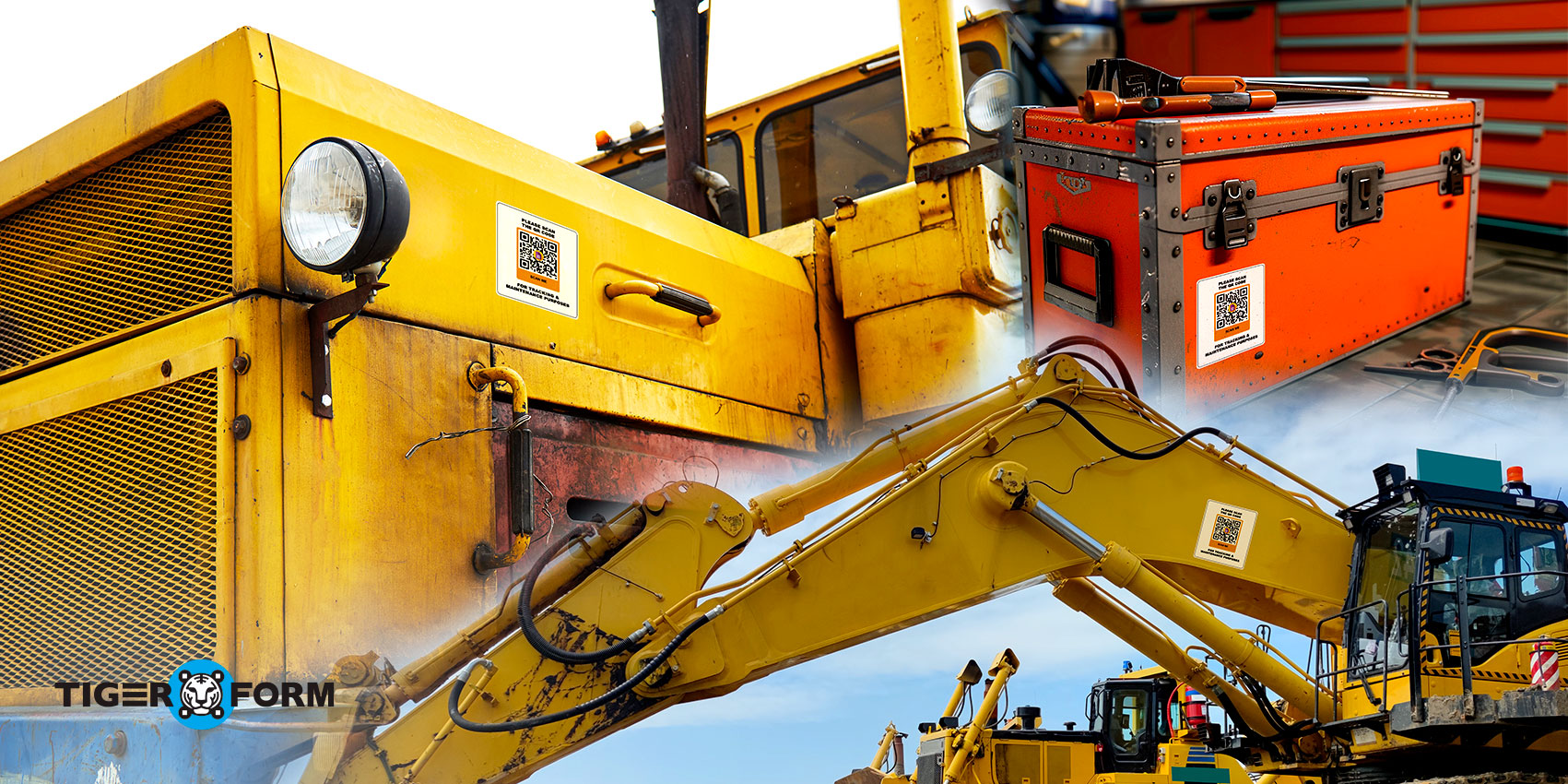
Project evaluation in construction is important, especially in the pre-project phase, to ensure you stay within budget and schedule. This is because 39% of projects fail due to poor planning, resources, and execution. Since traditional methods have their limitations, utilizing QR code forms to streamline the construction process and improve project evaluation is the best choice.
With a form QR code, you can measure the project’s success and identify any issues early so they can be fixed before they become problems. Let’s learn more about the QR code forms and how they help with project evaluations in construction.
What is construction project evaluation?
It is a systematic and objective assessment of a project that includes measuring the success of a project against budget, schedule, and quality standards. This can be done by gathering the relevant data and using the right evaluation method to have better project outcomes.
With the evaluations you can identify the problems early in the project, Like delays or cost overruns, so they can be fixed before they get worse. Project evaluation is carried out at different stages of the project, including pre-project evaluation, ongoing-project evaluation, and post-project evaluation.
Project evaluation form for construction
Form QR code is used to collect and manage project data. You can simply use a construction QR code to easily access construction evaluation form from the construction site. The QR codes are just the perfect solution to project tracking and data management, which is essential to prevent project delays and other errors. Efficient communication through QR code forms enhances communication between project and site managers and keeps the project on track.
Traditional methods of project evaluations in construction
The following section covers some of the traditional methods of project evaluations in construction:
Return on investment (ROI)
Return on Investment in construction project evaluation tells how much profit or value a project generates compared to its cost. According to a study by PMI, poor estimates can result in 28% of projects exceeding their budget.
To calculate ROI, you need to take the estimated or actual income from a project and subtract the estimated or actual costs. This way, you can assess whether the financial benefits outweigh the investment.
Internal rate of return (IRR)
Internal Rate of Return, as the name suggests, calculates your rate of return on a project while excluding external factors. A high IRR simply means the investment is more profitable, while a lower or negative value suggests the project is not worth the investment. Overall, IRR helps construction managers in evaluating the project viability.
Net present value (NPV)
Net Present Value is actually the difference between the present value of cash inflows and the present value of cash outflows. Any score greater than zero means the NPV is good. Like IRR, NPV helps assess whether a project will generate enough value to justify its investment.
Cost-benefit analysis (CBA)
Cost-benefit analysis is more of a systemized approach that is used to assess a project by comparing its benefits and costs with a certain project or policy. Let’s take an example to understand it better. If the value of benefits is $45,000 and the cost of the project is $9,640, then the given benefit to cost ratio is $45,000/ $9,640 = 5:1, which means you can achieve a gross benefit of 5 for every dollar spent on this project.

How does the QR code project evaluation form for construction prove helpful?
Now that you know what construction project evaluation is, let’s understand how a project evaluation form can prove beneficial.
Quality control
We all know how important it is to follow project specifications and the final product should adhere to the strict quality control standards. While keeping a quality control check is a hassle, it’s not a big problem with QR code forms as you can ensure quick and accurate inspection of documents. QR codes should be placed on different parts of the site to access forms for recording quality checks and issues. This way, you can get immediate feedback that helps avoid any defects or deviations from standards.
Centralized storage
The data collected from on-site evaluations can be linked directly to a digital database. This can be cloud-based or on-premise storage that acts as a central database used for easy access and comparison of evaluations over time. The database securely stores all the information and eliminates the need for physical paperwork. It can only be accessed by authorized personnel and is truly beneficial for quick retrieval of past evaluations.
Planning and designing
QR code for construction can also be used to get quick feedback on design plans. By scanning a QR code linked to a form, project managers or other important stakeholders can submit comments and suggestions directly. This significantly speeds up the approval process, which is also a positive aspect of using digital tools like QR code forms, as they lead to fewer delays and more reliable project management.
Inventory management
Did you know a Japanese company designed QR codes to track automobile parts as they move through the assembly process? Well, now you know. QR code forms can also be used to track and manage construction materials. QR code project evaluation form for construction can be placed on storage locations and material shipments so they can be scanned to update inventory records right on time. This is really helpful in reducing manual tracking errors and ensuring the materials are accurately accounted for.
Progress reporting
Another important benefit of QR code forms in construction project management is quick progress reporting. The workers and supervisors alike can scan the QR codes on-site, fill them out, and submit the progress report. Real-time progress reporting like this helps project managers monitor progress against schedule so they can make timely adjustments.
Incident reporting
Accidents are inevitable, no matter the type of project. But having safety precautions and all the right tools to tackle them can ensure safety to a good extent. One way to tackle this is linking an incident report form to a QR code. This allows workers to immediately scan the form, record the incident details, and submit them. That said, you can ensure compliance with safety regulations and a safe work environment for everyone.

How to use form QR code in project evaluation for construction?
While tools like Google Form QR Code are user-friendly, they do not offer many built-in options and templates. In that case, Form QR Code is just the right form builder for a project evaluation.
Follow these steps to create a perfect QR code form for project evaluation.
- Create the form: First things first, you need to build the desired form using a form creator form QR code, like Form QR Code. This tool features a lot of fields, templates, and other features to help you create a nice QR code form.
- Generate the QR code: Once the form is ready, just tap on the “Generate QR Code” to link the form to a code.
- Distribute the code: The key is to place the QR form at strategic locations on the construction site. For instance, you might place it on equipment that needs regular reporting or areas undergoing inspection.
- Data collection: Whenever someone needs to submit a report, they can scan the QR code that takes them to the form. They can fill in the necessary fields and submit the form.
- Monitor and analysis: The form can be connected to the analytics system to monitor and analyze the submitted data.
How to effectively implement QR code forms for construction in project evaluation?
Using the digital construction site inspection forms, workers can easily fill out forms that would otherwise require paper forms. The QR code forms usually prove helpful in ongoing project evaluation.
Here is how you can easily implement a evaluation form for construction:
Daily logs and reporting
The QR codes should be strategically scattered at the construction site to get a log of daily activities. Workers can scan codes at certain sites or equipment to log their work hours and completed tasks. They can also log any issues that they encounter.
Integrate QR code forms into the software
The QR code forms can be integrated into the project management system. This helps reduce the manual paperwork and automate the data entry tasks. Integration is highly effective in ensuring the data collected via QR codes is automatically synced with your project management system.
Monitor project milestones
Using the Form QR Code, you can set up forms to track the progress of the project against milestones and deadlines. The team can scan QR codes placed at strategic positions, submit their progress update, and complete evaluation forms. This is done to ensure milestones are met, and any delays are reported on time.

Try project evaluation form for construction using QR code form
Project evaluation for any construction work helps ensure you stay at the top of a project before, during, and after completion. While the traditional methods of evaluation work well, there’s still a need to make evaluations better.
This is where the QR code project evaluation form for construction comes to the rescue. Employing these forms at construction sites really helps ease the evaluation and, hence, results in better management.
To ease the process for you, Form QR Code comes up with a one stop solution. Construction site managers, workers, and even evaluation teams can just scan it to give feedback, fill out survey forms, or share progress information. All this is possible with a single scan!
